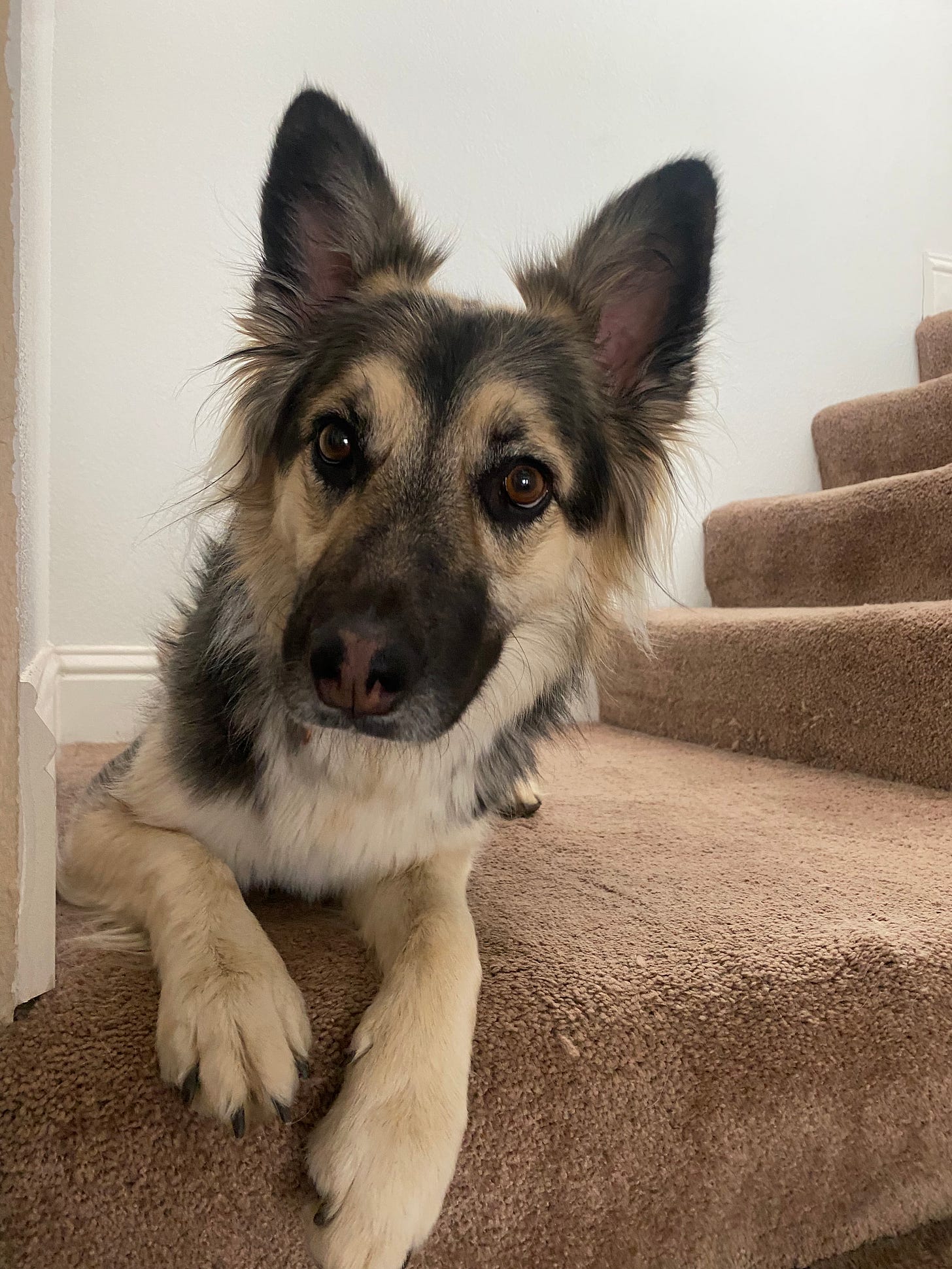You can’t counter condition everything
On obedience and coping skills for everyday canine stressors
When I first vacuumed after adopting Halle, she was not a fan. And she was nervous about the hoover in her special way of being nervous about things, which is to follow them around rather than just avoid them.
So she would awkwardly pace after the vacuum, keeping a close eye on it even though she was clearly uncomfortable. She couldn’t seem to figure out that she was making her own life hard. So I helped her out. I sent her to her “place,” a mat on the stair landing, while I vacuumed downstairs.
Sure enough, this was all it took to fix the issue. Now when I vacuum, she will sometimes even choose to lay down on the stair landing herself. She often falls asleep to the tune of the brushroll.
My approach is a bit counter to other protocols for canine fears. Some would say it’s not addressing the underlying emotion—discomfort about the vacuum. Those trainers might instead focus on creating positive associations (AKA counter conditioning)—bring the vacuum out, feed a treat, repeat. Over time, the vacuum predicting good things would leave the canine feeling more optimistic about it.
But I felt like Halle needed help finding a better option than following the vacuum around. So instead I taught her to go to her mat. I was careful to not push the vacuum close to her when she’s on her “place” and she got treats while lying there. While some trainers frown upon using obedience to resolve emotional problems, I’ve found that if a cued behavior results in a consequence the dog likes (in this case, safety from the vacuum), it can serve as a bridge to changing emotions.
(I should add: while this protocol worked for Halle, she was not very scared to begin with. “Place” probably won’t cut it for panicking dogs. Halle is also mostly herders (German shepherd/border collie) and her behavior may have been partly a Herding Dog Thing rather than purely apprehension).
While it’s not always easy to identify the right behaviors to serve as emotional bridges, when it’s done well it can make life a lot easier for handlers and dogs alike. For nail trims and grooming, I taught Halle to lie on her side. I could have focused instead on a stand-stay or a chin rest, but I know she’s more comfortable lying down. So I rewarded the position I know she’s more comfortable in, and then within that context gradually introduced her to nail trims.
I later realized that I can use the same context for other grooming needs—removing a thorn or combing her long, tangle-prone tail hair, for example. Because I taught her that picture—where she’s lying on her side and can choose to opt out by getting up if she’s truly not having it—she’s grown much better with handling and grooming across the board.
Teaching specific behavior patterns can help paint a picture for our dogs when they’re concerned or otherwise feel strongly about something. If I tried to individually pair everything Halle doesn’t like with treats to build a positive association, that would take up her entire life—she doesn’t like a lot of things. And it probably wouldn’t work that well because I would be chucking cheese and steak at every problem and eventually those treats would be less novel and therefore less likely to change her emotions.
The less time we spend focused on every identifiable concern our dogs have, the more we can hike and play and do fun things with them. If obedience skills can help with that, then I’m all for it.





A flexible and nuanced perspective, thanks!